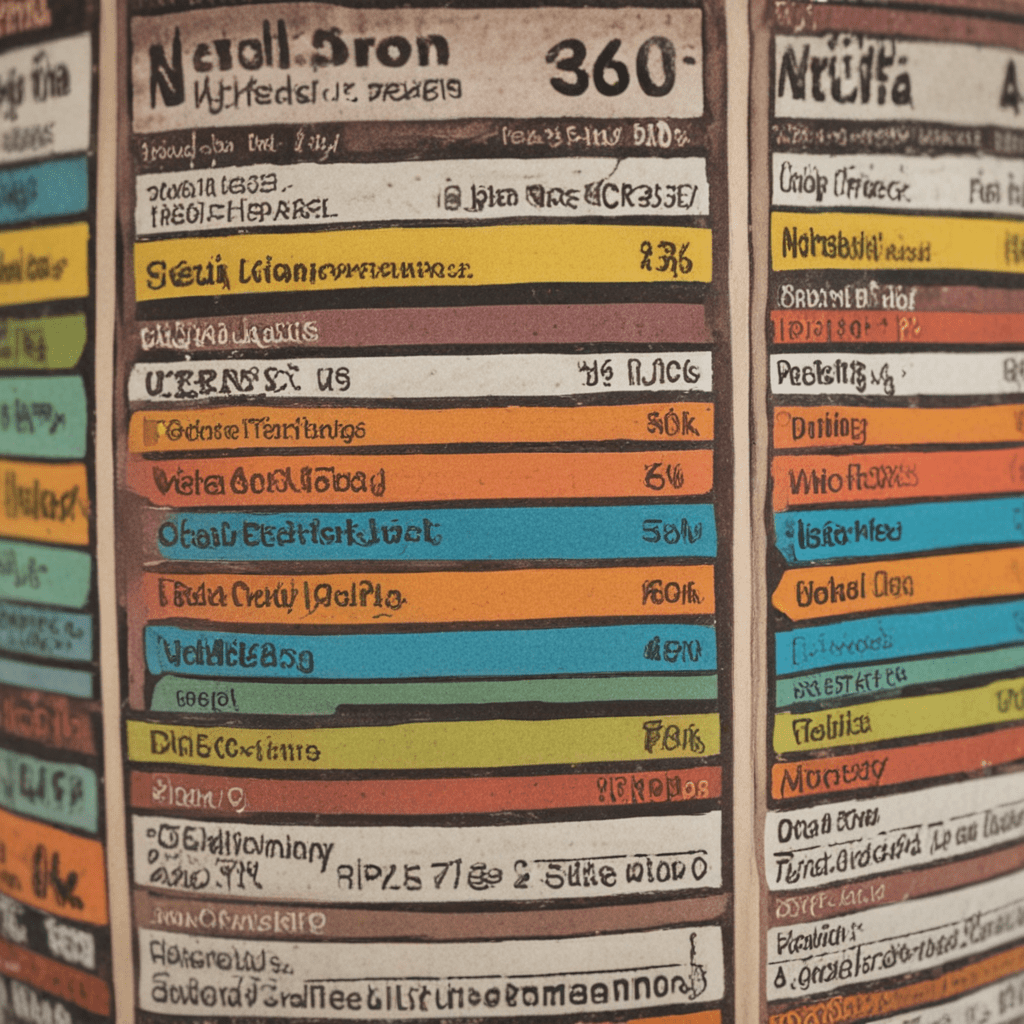
1. Importance of Nutrition Labels for Kids
Understanding nutrition labels empowers children to make informed food choices that support their health and well-being throughout their lives. Nutrition labels provide crucial information about the nutrient content of foods, enabling kids to identify nutritious options, limit unhealthy choices, and establish a foundation for lifelong healthy eating habits. By teaching children to navigate nutrition labels, we equip them with a valuable tool for making healthy decisions and shaping their future health outcomes.
2. Introducing the Basics of Nutrition Labels
Nutrition labels are typically found on the back or side of food packaging and contain standardized information regulated by government agencies. They showcase essential dietary components, making it easier for consumers to compare and choose foods that align with their nutritional needs. Introducing children to the basics of nutrition labels involves explaining the purpose, location, and key sections of the label, fostering their understanding of the role it plays in making healthy food choices.
3. Understanding Serving Sizes and Calories
Serving size is a fundamental concept in nutrition labels, representing the recommended amount of food to consume per serving. Understanding serving sizes helps kids gauge appropriate portions and avoid overconsumption. Calories, a measure of energy provided by food, are also crucial. Teaching children about calories empowers them to make informed choices and balance their energy intake with their activity levels, promoting a healthy weight and overall well-being.
4. Decoding Macronutrients: Carbohydrates, Protein, and Fat
Macronutrients, including carbohydrates, protein, and fat, are essential components of a balanced diet. Nutrition labels detail the amounts of each macronutrient per serving, showcasing their distribution and contribution to the food's overall nutritional value. Explaining the functions and sources of macronutrients helps children decipher their significance and make informed choices to meet their growth and development needs.
5. The Significance of Added Sugars and Saturated Fats
Nutrition labels highlight the presence of added sugars and saturated fats, two nutrients that should be consumed in moderation. Added sugars contribute to empty calories and can lead to weight gain, tooth decay, and increased risk of chronic diseases. Saturated fats, primarily found in animal products, can raise cholesterol levels and increase the risk of heart disease. Equipping children with knowledge about these nutrients empowers them to make informed choices, limiting their intake of unhealthy fats and sugars to promote optimal health.
6. Exploring Vitamins, Minerals, and Fiber
Vitamins, minerals, and fiber are essential micronutrients that play crucial roles in maintaining bodily functions. Nutrition labels provide information about the content of these nutrients, helping children identify foods rich in vitamins, minerals, and fiber. Understanding the importance of these micronutrients fosters healthy choices that support growth, development, and overall well-being.
7. Making Informed Choices: Comparing Foods and Brands
Nutrition labels enable kids to compare the nutritional value of different foods and brands, empowering them to make informed choices aligned with their dietary goals. By comparing macronutrient profiles, sugar and fat content, and vitamin and mineral composition, children can identify healthier options and make informed decisions that contribute to their overall health and well-being.
8. Building Healthy Habits Through Nutrition Label Reading
Regular engagement with nutrition labels fosters healthy habits by promoting mindful eating and encouraging children to make informed choices. The process of reading and understanding nutrition labels empowers kids to take ownership of their health, establishing a foundation for lifelong healthy eating practices.
9. Empowering Kids with Nutritional Knowledge
Teaching children to navigate nutrition labels equips them with valuable knowledge that empowers them to make healthy choices throughout their lives. By demystifying nutrition information, we empower kids to decipher food labels confidently, fostering a deeper understanding of the impact of their dietary choices on their health and well-being.
10. Hands-on Activities for Teaching Nutrition Label Literacy
Interactive activities can make learning about nutrition labels engaging and fun for kids. Hands-on activities, such as label scavenger hunts, food label comparisons, and mock grocery store visits, provide practical experiences that reinforce nutrition label literacy and promote healthy food choices.
FAQ
Q: Why is it important to teach kids about nutrition labels?
A: Nutrition labels empower kids to make informed food choices that support their health and well-being.
Q: What are some key nutrients to look for on nutrition labels?
A: Key nutrients include carbohydrates, protein, fat, added sugars, saturated fats, vitamins, minerals, and fiber.
Q: How can I make learning about nutrition labels fun for kids?
A: Engage in interactive activities such as label scavenger hunts, food label comparisons, and mock grocery store visits.


